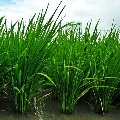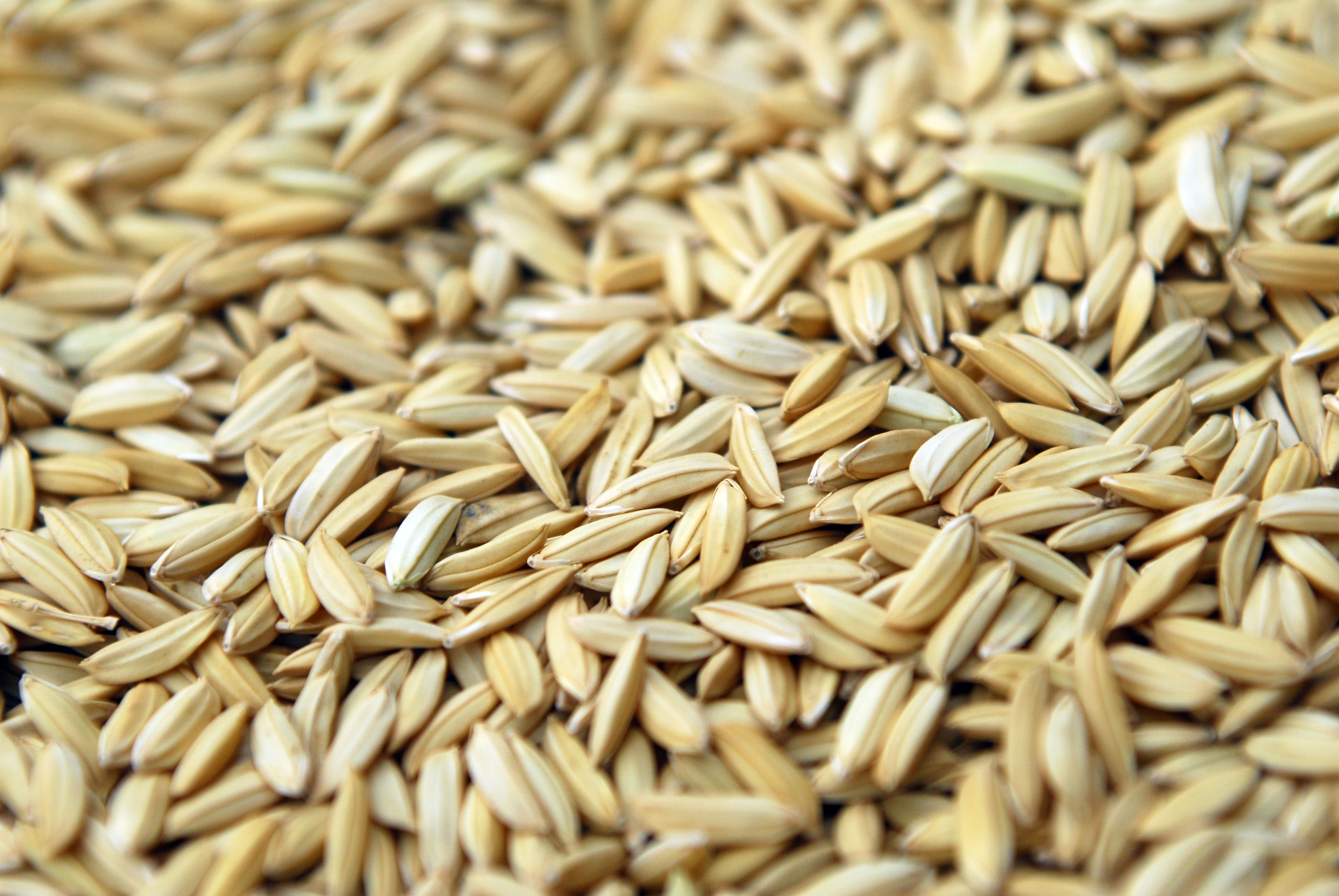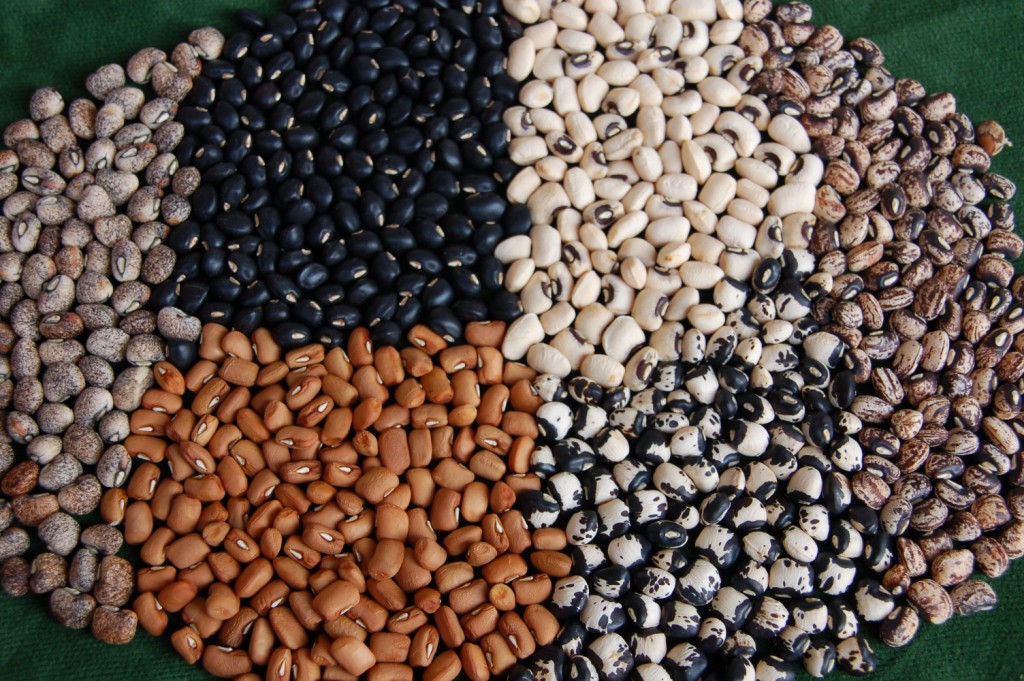Global team develops tools to unravel diversity of rice (IRRI)
- Published Date

IRRI (2009). Global team develops tools to unravel diversity of rice (IRRI). 24 July 2009. View press release.
Getting to the bottom of rice
- Published Date

The Max Planck Society (2009). Getting to the bottom of rice. 23 July 2009 View press release
Related GCP project for the two press releases above is Commissioned project G4005.35 ‘Sequencing multiple and diverse rice varieties: connecting whole-genome variation with phenotype’ (PI: Ken McNally of IRRI)
Hunt for “Climate‐Ready” crops accelerates as organizations search seed collections worldwide
- Published Date

Amid predictions that climate change will create hostile growing conditions, partners look to crop collections for future varieties
ROME, ITALY (22 May 2009)—The Global Crop Diversity Trust announced today numerous new grant awards to support scientists to explore the millions of seed samples maintained in 1,500 crop genebanks around the world. They will search for biodiversity critically needed to protect food production from the ravages of climate change. ![]() Download
Download
For further information, please contact:
Carol Vieira at +1 401‐714‐0821 or cvieira @burnesscommunications.com
Embargoed for release until 12:15 am friday, may 22, 2009 Rome (Italy) CEST / 6:15 pm US EDT thursday, may 21, 2009
Hunt for “Climate‐Ready” crops accelerates as organizations search seed collections worldwide
Amid predictions that climate change will create hostile growing conditions, partners look to crop collections for future varieties
ROME, ITALY (22 May 2009)—The Global Crop Diversity Trust announced today numerous new grant awards to support scientists to explore the millions of seed samples maintained in 1,500 crop genebanks around the world. They will search for biodiversity critically needed to protect food production from the ravages of climate change.
The awards support a wide range of innovative projects, including a search in Southeast Asia and the Pacific for bananas that are resistant to banana streak virus, which will likely become more problematic with climate change; transferring traits from a wild to a cultivated variety of potato that convey resistance to a soil‐borne pathogen responsible for bacterial wilt; a search for novel traits with tolerance to heat and drought stresses in Chilean maize crop collections; a project in India to find pearl millet that can handle scorching temperatures; and a project to increase the ability of maize to cope with erratic rains, while increasing its nutritional quality for small‐scale, marginal farms in Sub‐Saharan Africa.
Working together with the Trust in the effort will be the Generation Challenge Programme (GCP) of the Consultative Group on International Agricultural Research (CGIAR) and the UN Food and Agriculture Organization’s Global Partnership Initiative for Plant Breeding Capacity (GIPB).
“We want to support scientists to probe crop genebanks for natural traits that will allow farm production to stay one step ahead of climate change,” said Cary Fowler, Executive Director of the Global Crop Diversity Trust. “The data are now clear that rising temperatures, radically altered precipitation patterns and new infestations of plant pests are on the near horizon, and we need to look to our crop genebanks for the traits that will help us avoid a crisis.”
By the turn of the century, scientists now predict that temperatures during growing seasons in the tropics and subtropics are destined to be even hotter than what are now considered extreme temperatures. New data also show steadily dryer conditions in many regions. But there is widespread concern, particularly in the developing world, 2 that plant breeding efforts are not moving fast enough to develop new varieties that can withstand these stresses and enable farmers to avoid steep drops in food production.
The Trust, in partnership with the UN Foundation and with the support of the Bill & Melinda Gates Foundation as well as the Grains Research and Development Corporation of Australia, are supporting work to probe crop collections for critical traits such as drought or heat tolerance. GCP is offering funding for scientists to use molecular mapping technology to identify the “DNA fingerprint” of the crop samples. The UN Food and Agriculture Organization’s Global Partnership Initiative for Plant Breeding Capacity (GIPB) is supporting efforts by plant breeders to use such information to breed new, high‐yielding varieties adapted to conditions on the ground.
“It’s not enough to simply identify the trait,” said Humberto Gómez, the Coordinator of GCP’s Genotyping Support Service. “To produce a viable crop variety, one has to go further and also conduct molecular analysis and then the breeding work. This work can take up to ten years from the point of discovering the trait to having a new variety actually growing in a farmer’s field. We’re seeking to speed up that process by supporting breeders in the developing world.”
“Together, these efforts will increase our ability to be ready for climate change,” said Elcio Guimaraes of GIPB. “It will be much easier for young plant breeders to identify and use promising traits that arm crops against climate change.”
The grants cover projects initiated by scientists in Africa, Asia, the Americas and Europe. They involve a range of crops and seek a variety of important plant traits. For example:
- Scientists in Portugal and Angola are jointly investigating the ability of 100 samples of native or “landrace” wheat varieties and 15 modern varieties to withstand high temperature and drought.
- Scientists in India are exploring a collection of pearl millet in search of traits that will allow this important cereal grain, which originated in Africa but has been grown in India for thousands of years, to remain viable as climate change brings hotter temperatures.
- Scientists based in the United States are analyzing sorghum germplasm maintained by the India‐based International Crops Research Institute for the Semi‐Arid Tropics for resistance against multiple diseases, including downy mildew and head smut funguses. The work is being carried out by researchers based in Texas, where sorghum production generates $1 billion annually.
- A project will make use of conventional plant breeding and molecular markers to increase the ability of maize to cope with erratic rains, while increasing its nutritional quality for small‐scale, marginal farms in Sub‐Saharan Africa.
- The African Centre for Crop Improvement will build on previous advances in improving nutritional quality in maize, by adding in drought tolerance so that new varieties can benefit the most vulnerable growers in marginal areas 3
- In the Philippines, the Institute of Plant Breeding will widen the genetic base available for improving bananas by researching ways to eliminate the deleterious effects of viruses that have become integrated into the genetic make‐up of some of the wild relatives that can contribute valuable traits to the cultivated species.
The mission of the Global Crop Diversity Trust is to ensure the conservation and availability of crop diversity for food security worldwide. Although crop diversity is fundamental to fighting hunger and to the very future of agriculture, funding is unreliable and diversity is being lost. The Trust is the only organization working worldwide to solve this problem, and has already raised over $US150 million. For further information, please visit: www.croptrust.org.
The Generation Challenge Programme (GCP) is a broad and true network of partners from advanced research institutes and national agricultural research programmes collectively working to improve crop productivity in drought‐prone environments. GCP partners draw on plant diversity and new technologies to improve crops with desired traits, focusing on drought tolerance. Through this wide range of partners, GCP links basic science with applied research and helps to weave an effective and interactive community of crop researchers at both global and regional level. GCP is a programme of the Consultative Group on International Agricultural Research (CGIAR). For further information, please visit: http://www.generationcp.org/. For further information on the latest projects, please visit: http://www.generationcp.org/sp5/?da=09142800
The Global Partnership Initiative for Plant Breeding Capacity Building (GIPB) is a multiparty initiative of knowledge institutions around the world that have a track record in supporting agricultural research and development, working in partnership with country programmes committed to developing stronger and effective plant breeding capacity. As a partnership of stakeholders from the public, private and civil society sectors, the initiative is aimed at catalyzing and supporting national, regional and global action among relevant international organizations, foundations, universities and research institutes, corporate and business sector, civil society associations, and national and regional bodies. For further information, please visit: http://km.fao.org/gipb/.
Filipino farmers welcome new rice varieties
- Published Date
DuPont hosts meeting of leading plant scientists to improve world agricultural productivity
- Published Date
Background to the project
The SP1 project 2005-07: Whole plant modeling of drought response in cereals was largely methodological and exploratory, and aimed at applying and improving the role of plant/crop modelling to assist plant breeding and genetic/genomic research in the area of drought tolerance of cereals.
DuPont hosts meeting of leading plant scientists to improve world agricultural productivity
Final meeting, 4-7 february 2008, Pioneer Johnston, Iowa, USA
Principal Investigator of project: Delphine Luquet
Background to the project
The SP1 project 2005-07: Whole plant modeling of drought response in cereals was largely methodological and exploratory, and aimed at applying and improving the role of plant/crop modelling to assist plant breeding and genetic/genomic research in the area of drought tolerance of cereals.
Goals of the workshop
The workshop, hosted by Pioneer, addressed model-assisted characterisation of target environments for breeding, model-assisted phenotyping of complex traits (including the issue how to achieve high throughput), model-assisted trait characterisation and integration and ideotype definition.
During this 3.5-day meeting, project results, keynotes by three excellent invited speakers and presentations by colleagues of Pioneer were presented and discussed. A debate was organised at the end of each session and at the end of the workshop to further explore and follow up these scientific challenges, including discussions on new projects and partnerships to be pursued.
IA Introductory documents
- IA1 - WPM meeing introduction
- IA2 - List of presentations
- IA3 - News release by Pioneer
- Team photo
I - Proceedings
Component 1 (C1): Model assisted environment characterization--Proceedings
- C1.1 Integrating model-based environmental characterization in an applied sorghum crop improvement program (David Jordan and Graeme Hammer)
- C1.2: Whole plant modeling within the context of a maize breeding program where drought tolerance is a primary objective: Technology development and application and status of GCP-WPM activities (Mark Cooper and Carlos Messina)
- C1.3 Characterization of drought stress environments for upland rice and maize in central Brazil (Alexandre B Heinemann, Michael Dingkuhn, Delphine Luquet, Jean Claude Combres and Scott Chapman)
- C1.4 The West African target population of environments for grain sorghum: Varietal fit to agro-ecological zones (Michael Dingkuhn, Mamoutou Kouressy, Michel Vaksmann)
Component 2 (C2): Multi-site trial model assisted trait evaluation for breeding--Proceedings
- C2.1 Maize phenotyping for drought adaptation: potential contribution of new physiological protocols (Jose Luis Araus, Ciro Sánchez, Llorenc Cabrera, Jose Crossa)
- C2.2 - Merged with C1.2: Whole plant modeling within the context of a maize breeding program where drought tolerance is a primary objective: Technology development and application and status of GCP-WPM activities (Mark Cooper and Carlos Messina)
- C2.3 Maize drought phenotyping for modelling application (Edson Alves Bastos, Milton José Cardoso, Everaldo Moreira da Silva, José Francisco de Carvalho and Reinaldo Lúcio Gomide)
- C2.4 Rice drought phenotyping for modeling (Cleber M Guimarães, Luís F Stone)
- C2.5 Challenges and Difficulties of Imposing and Monitoring Crop Water Stress in Field Trials (Camilo LT Andrade, Reinaldo L Gomide, Paulo EP Albuquerque, Tales A Amaral, Cristiano MR Silva)
- C2.6 Crop model assisted characterization of appropriate traits for the rice TPE in Brazilian Cerrados (Alexandre B Heinemann, Delphine Luquet, Michael Dingkuhn and Scott Chapman)
- C2.7 Phenotyping of sorghum photoperiod responses using heuristics (Michael Dingkuhn, Mamatou Kouressy, Michel Vaksmanna, Benoît Clergeta, Jacques Chantereau)
Component 3 (C3): Model improvement for assisting process based trait phenotyping and connection to genetic information--Proceedings
- C3.1: Metabolic phenotyping and plant performance (Yves Gibon, Ronan Sulpice, Hendrik Tschoep, Maria Piques, Nadine Barz, Melanie Höhne and Mark Stitt)
- C3.2: Short-term responses of leaf growth to water deficit scale up to whole-plant and crop levels. An integrated modelling approach in maize (K Chenu, SC Chapman, GL Hammer, G McLean and F Tardieu).
- C3.3: Modelling the GE interaction for leaf and silk growth rates in maize: genetic analyses of time courses and responses to water deficit (C Welcker, O Turc and F Tardieu).
- C3.4: Modeling drought effects on rice with EcoMeristem: Feedbacks of water and carbohydrate relations on phenotypic plasticity (D Luquet, M Dingkuhn, A Clément-Vidal).
- C3.5: Model assisted phenotyping of morphogenetic process diversity within sativa rices (D Luquet, M Dingkuhn, A Clément-Vidal, K McNally)
- C3.6: Mapping QTL involved in rice early morphogenesis as described by the process based parameters of EcoMeristem model (N Ahmadi, D Luquet, B Courtois, and M Dingkuhn).
II - Talks
IIA C1 - Component 1: Model assisted environment characterization--Talks
- C1.1: Introduction
- C1 Keynote: Integrating model-based environmental characterization in an applied sorghum crop improvement program (David Jordan and Graeme Hammer)
- C1.3: Characterisation of drought stress environments for maize and upland rice in central Brazil (AB Heinemann, D Luquet, M Dingkuhn, JC Combres, S Chapman).
- C1.4: The West African TPE for grain sorghum: Varietal fit to agro-ecological zones (Michael Dingkuhn, Mamoutou Kouressy, Michel Vaksmann)
IIB C2 - Component 2: Multi-site trial model assisted trait evaluation for breeding--Talks
- C2.1: Introduction
- C2 Keynote: Maize phenotyping for drought adaptation: potential contribution of new physiological protocols (J-L Araus)
- C2.3: Monitoring Crop Water Stress on Field Trials (Camilo LT Andrade, Reinaldo L Gomide, Paulo EP Albuquerque, Tales A Amaral, Cristiano MR Silva).
- C2.4: Maize drought phenotyping for modeling application Project: Whole plant physiology modeling of drought tolerance in cereals (Edson Alves Bastos)
- C2.5: Rice drought phenotyping for modeling (P Guimaraes)
- C2.6: Crop model assisted characterization of appropriate traits for the rice TPE in Brazilian Cerrados (AB Heinemann, D Luquet, M Dingkuhn, S Chapman).
- C2.7: Phenotyping of sorghum photoperiod responses using heuristics (Michael Dingkuhn, Mamatou Kouressy, Michel Vaksmann, Benoît Clerget, Jacques Chantereau)
- C2: Debate framework (C Welcker)
IIC C3 - Component 3: Model improvement for assisting process based trait phenotyping and connection to genetic information--Talks
- C3: Introduction
- C3.1: Keynote - Metabolic phenotyping and plant performance (Yves Gibon)
- C3.2: Modelling the GE interacion - Which models for what? (C Welker, O Turc, F Tardieu)
- C3.3: Short-term responses of leaf growth rate to water deficit scale up to whole-plant and crop levels - An integrated modelling approach in maize (Karine Chenu, Scott Chapman, Graeme Hammer, Claude Welcker, Greg McLean, François Tardieu)
- C3.4-C3.6: General problematic & challenge (D Luquet)
- C3.6: Exploratory mapping of QTLs involved in rice early morphogenesis as described by the process based parameters of EcoMeristem model (N Ahmadi, B Courtois, J Frouin, M Dingkuhn, D Luquet)
- C3: Discussion framework (G Hammer)
III Discussions
- Component 1 (C1): Environment Characterisation (S Chapman)
- Component 2 (C2): Model-assisted phenotyping--Summary of discussion (C Welker)
- Component 3 (C3): Complex traits and G-to-P modelling--Summary of discussion (G Hammer)
- Component 2 & Component 3 (C2& C3): Advancing on the phenotyping front (M Dingkuhn)
For more details on this SP1 project, please see page 92 of 2007 Project mid-year and final reports: Competitive and commissioned projects.


